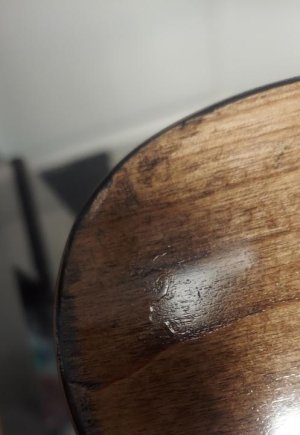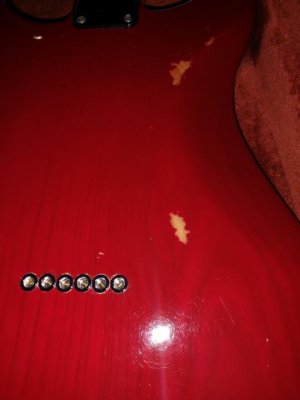ThreeChordWonder
New member
Got a small problem on the back of the DIY thinline P90 body I've been working on.
The front is fine, loverly in fact, but theres some damage on the end of the lower bout.
It's either sander rash or the wood got too "wet" and there is some scoring in the grain.
Thinking CA glue or clear epoxy as a filler. I don't think wood filler will stick.
Don't want to use anything that will react with the clear polyurethane, just fill the divots so the finished surface is flat and shiny.
What say you lot?

The front is fine, loverly in fact, but theres some damage on the end of the lower bout.
It's either sander rash or the wood got too "wet" and there is some scoring in the grain.
Thinking CA glue or clear epoxy as a filler. I don't think wood filler will stick.
Don't want to use anything that will react with the clear polyurethane, just fill the divots so the finished surface is flat and shiny.
What say you lot?


